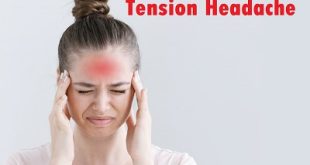Definition
Telogen effluvium (TE) was first termed by Kligman to define an increased shedding of normal club hairs based on the hypothesis that, irrespective of the cause, the follicle tends to act in a similar manner undergoing a premature termination of anagen and precipitating telogen.
Telogen effluvium is a noninflammatory disease characterized by diffuse loss of telogen hair, caused by any disruption of hair cycle which leads to increased and synchronized telogen shedding. It is the leading cause of diffuse hair loss. However, the actual incidence of the disease remains unknown. It has been suggested to result from an abrupt shift of large numbers of anagen hairs to telogen hairs on the scalp with altered ratio of anagen hair to telogen hair from the normal ratio of 90:10–70:30. The degree of telogen effluvium depends on the severity and duration of exposure, but not the type of the agent.
Pathophysiology of telogen effluvium
Telogen effluvium can affect hair on all parts of the body, but, generally, only loss of scalp hair is symptomatic.
Understanding the pathophysiology of telogen effluvium requires knowledge of the hair growth cycle. All hair has a growth phase, termed anagen, and a resting phase, telogen. On the scalp, anagen lasts approximately 3 years, while telogen lasts roughly 3 months, although there can be wide variation in these times between individuals. During telogen, the resting hair remains in the follicle until it is pushed out by growth of a new anagen hair.
In most people, 5-15% of the hair on the scalp is in telogen at any given time. Telogen effluvium is triggered when a physiologic stress or hormonal change causes a large number of hairs to enter telogen at one time. Shedding does not occur until the new anagen hairs begin to grow. The emerging hairs help to force the resting hairs out of the follicle.
Evidence suggests that the mechanism of shedding of a telogen hair is an active process that may occur independent of the emerging anagen hair. The interval between the inciting event in telogen effluvium and the onset of shedding corresponds to the length of the telogen phase, between 1 and 6 months (average 3 mo).
Headington has described 5 functional subtypes of telogen effluvium, based on which portion of the hair cycle is abnormally shortened or lengthened. These subtypes represent variations on the principles discussed above. It is rarely possible to distinguish these subtypes clinically.
Telogen Effluvium causes and risk factors
Disturbances to the hair cycle can be caused by a number of triggers, including:
- Severe stress. Prolonged periods of stress can result in telogen effluvium. Hair loss typically occurs about 3 monthsTrusted Source after the stressful event.
- Poor diet. Hair requires key nutrients including protein, iron, B-vitamins, and zinc to grow. A shortage of these nutrients may affect the quality and quantity of a person’s hair.
- Sudden weight loss. Weight loss or chronic calorie restriction, such as in anorexia nervosa, can cause the hair to shed.
- Pregnancy and childbirth. During pregnancy, more hair is in the growth phase for longer. Hormonal changes that occur 3 to 6 monthsTrusted Source after birth can cause hair to shed. This is called post-partum telogen effluvium.
- Hormonal changes that occur during the menopause may also cause telogen effluvium.
- Certain drugs. Certain medications and recreational drugs can cause hair loss.
- Underlying health conditions. These can include autoimmune disease, conditions that affect the thyroid gland, and alopecia areata.
- Depending on the type of procedure, length of stay in hospital, medications, and overall nutritional status.
- Metal toxicity. Contact with toxic chemicals in metal can lead to hair loss.
Symptoms and Signs of telogen Effluvium
Shedding of hair is the most common sign of Telogen Effluvium. Some more prominent symptoms of Telogen Effluvium are listed below
- Noticeable hair loss during washing or combing hair
- Healthy looking scalp
- A generalised hair thinning
- Hair loss that is temporary
- Losing hair that has white bulb and lack of shiny sheath
- Dry, lusterless hair that are sparse and easily pluckable
- Hair colour changes from dark to brown or red, brown to blond
Diagnosis of telogen effluvium
Most cases of telogen effluvium can be diagnosed based on medical history and an examination of the scalp and hair. If the hair loss has been occurring for several months, there may be visible thinning patches, but often the hair loss is not dramatic enough for a doctor to notice. If you have large bald patches, you probably don’t have telogen effluvium. If the doctor gently tugs on some hairs on your scalp and four or more hairs come out, you probably have telogen effluvium. Also, the hairs will look like hairs in the telogen phase — they will have a white bulb at the end that was in the scalp, and will not have a gel-like covering around that end of the hair.
You may be asked to gather all hairs that fall out of your head over a 24-hour period, and count them to see if the hair loss is truly excessive. Losing fewer than 100 hairs in a day is considered normal. You also may be asked to gather and count lost hairs every one or two weeks to see when the shedding starts to decline.
In some rare cases, if there is reason to doubt the diagnosis, a biopsy of the scalp may be done. In this procedure, a small piece of the scalp that includes several hair follicles is removed and examined under a microscope. Your doctor also may do blood tests to check for conditions such as thyroid abnormalities that may be contributing to hair loss.
Management and treatment for telogen effluvium
Acute Shedding versus Chronic Shedding
Acute telogen effluvium becomes self-limited if the triggering factor is identified and removed. Causative conditions such as scalp conditions (e.g., psoriasis, seborrheic dermatitis) should be treated. The patient’s drug history should be obtained in detail, and drugs suspected to cause the condition should be replaced or discontinued. The longer the duration of shedding, the more probable the involvement of multiple and repetitive triggers such as nutritional deficiencies, thyroid disease, systemic illnesses, or infections. This makes the search for triggers more difficult and may require frequent visits.
Patient Education
Patient education is important in disease management. Disease correlation with triggers, and the timing of hair loss should be explained and frustrations addressed. Hair is an important part of the human body; the degree of psychological disability due to hair loss varies from person to person.
Correcting Deficiencies
If a measurable deficiency has been found, it should be corrected. A balanced diet and stable body weight are important. Although the use of polyphenolic compounds such as those in green tea has been reported to improve hair loss in mice, no such controlled studies are available for humans.
Minoxidil and Finasteride
The currently available FDA-approved standard drugs minoxidil and finasteride are neither efficient catagen inhibitors nor anagen inducers. Catagen-inducing drugs (e.g., beta-blockers, retinoids, anticoagulants, antithyroid drugs) should be avoided, and catagen-inducing endocrine disorders (e.g., androgen disorders, thyroid disorders, abnormal prolactin levels) should be treated.
Topical Corticosteroids
Topical corticosteroids are employed by dermatologists in the treatment. If the patient reports decreasing trichodynia after the application of topical corticosteroids, it is a sign of the therapy being effective.
Systemic Corticosteroids
In chronic telogen effluvium, corticosteroids can be given systematically especially if telogen effluvium is the manifestation of underlying systemic disorder like SLE.
CNPDA
Davis et al. reported a novel treatment of thinning of hair. This new treatment named CNPDA comprises a combination of caffeine, niacinamide, panthenol, dimethicone, and an acrylate polymer. This combination leads to an increased cross-sectional area of individual terminal scalp hair by 10%.
Prevention of telogen effluvium
Harvard Medical School explains that this type of hair loss is temporary, and will usually get better on its own. But the only way to prevent telogen effluvium is to avoid events that may trigger it. While you may not be able to avoid all potential stressors — like surgery or an unexpected illness — there are some simple steps you can take to prevent hair loss due to excessive shedding.
Manage Your Stress Levels
A period of very high stress can trigger telogen effluvium. While some amount of stress is normal and harmless, working to manage stress is important for many aspects of health, including your hair’s health. According to Mayo Clinic, “significant stress pushes large numbers of hair follicles into a resting phase. Within a few months, affected hairs might fall out suddenly when simply combing or washing your hair.”
Eat a Healthy Diet
Major changes to your diet or dramatic calorie restrictions are common causes of telogen effluvium. Not getting enough of certain important nutrients — including zinc, vitamin D, protein, and fatty acids — can lead to excessive shedding.
Take Care of Your Hair
Hair follicles are weakest when they are wet, and recommends allowing hair to dry before brushing it. While keeping your hair healthy and strong cannot prevent telogen effluvium caused by a stressful event in the past, it can help to minimize future hair shedding and breakage.
Don’t Wait. Get Help Today.
The sooner you address the symptoms of hair loss, the more likely you are to prevent irreversible damage. Speak to a medical professional today to begin your journey to a fuller head of hair.
 Diseases Treatments Dictionary This is complete solution to read all diseases treatments Which covers Prevention, Causes, Symptoms, Medical Terms, Drugs, Prescription, Natural Remedies with cures and Treatments. Most of the common diseases were listed in names, split with categories.
Diseases Treatments Dictionary This is complete solution to read all diseases treatments Which covers Prevention, Causes, Symptoms, Medical Terms, Drugs, Prescription, Natural Remedies with cures and Treatments. Most of the common diseases were listed in names, split with categories.







